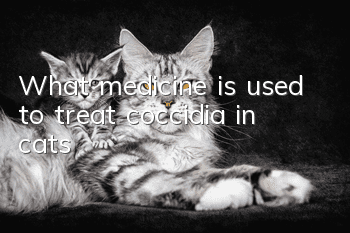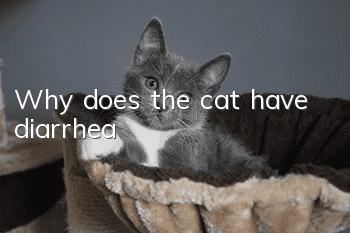What medicine is used to treat coccidia in cats?

There are not many parasites that can cause blood in cats’ stools, and coccidia is one of the more common ones.
Coccidia and Trichomonas are two relatively common stubborn parasites. General anthelmintics are completely ineffective against these two parasites, and anthelmintics that claim to be effective are often very ineffective. They will be mentioned below.
In 2006, it was reported that the infection rate of coccidiosis in cats in Beijing was 19.11%, and in 2011, it was reported that the infection rate in cats in Kunming was 45.8%. So coccidia is a relatively common parasite.
Coccidia mainly parasitizes on the mucosa of the small intestine and large intestine. Persistent blood in the stool is the main symptom of feline coccidiosis. However, because the symptoms are similar to other diarrheal diseases, it is easy to be misdiagnosed and treatment is delayed.
Moreover, many pet hospitals do not have fecal testing items for coccidia, so it is difficult to make a diagnosis.
Coccidia oocysts have strong vitality and can survive in moist soil for more than a year, so in theory there is a risk of infection when taking cats out.
In addition, it needs to be emphasized that if indoor cats in the city are brought to the countryside during the Chinese New Year, special attention must be paid to it. Many people will come to consult me after the Spring Festival every year. When the cats are brought back to their hometown, they will start to have blood in their stools, and in severe cases, they will have symptoms such as jaundice. , the final test result was coccidia.
1. Symptoms of coccidia
Compared with adult cats, kittens are more susceptible to infection and disease.
The main symptoms are dehydration, depression, loss of appetite and fever, as well as diarrhea and stool mixed with mucus and blood.
Weight loss occurs with diarrhea that lasts for several days.
After cats are infected with coccidia, symptoms will begin to appear after an incubation period of 7 to 8 days, and most will recover after about 30 days.
If there is a secondary bacterial infection, the condition will worsen. At this time, additional antibiotics and anti-inflammatory drugs will be needed.
In addition, many cats shed oocysts even though they do not show any symptoms. Immunity can be acquired over a period of time after infection, and no treatment is required for these cats.
2. Coccidia inspection methods:
Fecal examination: direct smear of feces
Examination of oocysts by floatation method.
3. Coccidia treatment
The most effective treatment for coccidia is formal treatment in the hospital.
Merely using anthelmintics is less effective.
Hospital treatment:
At present, there is no definite treatment for feline coccidiosis, but sulfa drugs have a certain effect.
1. Sulfadimethoxine (50mg/kg body weight per day)
2. A mixture of trimethoprim and sulfonazine (0.125mlL/kg body weight per day)
3. If dehydration occurs, infuse fluids accordingly.
If the intestines are fragile, you can use intestinal mucosal protective agents, such as oral aluminum silicate (0.5~1.5g/d);
When anemia occurs, blood transfusion (20~30mL/kg) is also required;
If the body temperature drops, please keep warm.
If inflammation occurs, you also need to use some anti-inflammatory drugs, such as Sono (Amoxicillin).
Long-term use of antibiotics will cause the proliferation of toxic bacteria in the intestines and absorb the toxins produced, so long-term use is not recommended.
This treatment generally takes 7 days as a treatment cycle. After 7 days, check the stool again to confirm whether there are still coccidia. If it's no longer available, throw away the litter box at home or disinfect it thoroughly. If, there are still, proceed to the next cycle of treatment.
Ordinary anthelmintic drugs are useless for coccidia. Currently, the effective anthelmintic drugs are Buddy d800, Baiqiuqin, and Happy Brown Sugar.
However, according to the actual feedback I have received, the actual effects of these anthelmintic drugs are not very good, and they may be more suitable for prevention than treatment.
4. Coccidia review and prevention
Generally, after 7 days of medication, do another fecal examination. If the condition has been cured, immediately replace the cat litter box with a new one, or scald all the old cat litter boxes with boiling water and replace them with new cat litter.
This is very important. As mentioned earlier, coccidia can survive in moist soil for more than a year.
If there are still some coccidia in the fecal examination results, change the pot and sand two days later.
In short, change the litter box after it is cured.
Try not to take your cat out on a daily basis, and if you take it out, try not to come into contact with the soil.
- What should you pay attention to when your Ragdoll cat arrives at its new home?
- How soon can a cat take a bath after external deworming?
- Can a cat be saved after eating a dead mouse and getting poisoned?
- How long does it take for a cat to receive its first dose of Miao Sanduo?
- How does the pH value of cat urine affect cat health?
- Six things to note when feeding your cat
- How to provide oral care for cats
- Why does a cat keep biting its nails?
- What should you pay attention to when going to someone else’s house to pet a cat?
- Do cats shed hair during the seasons?



